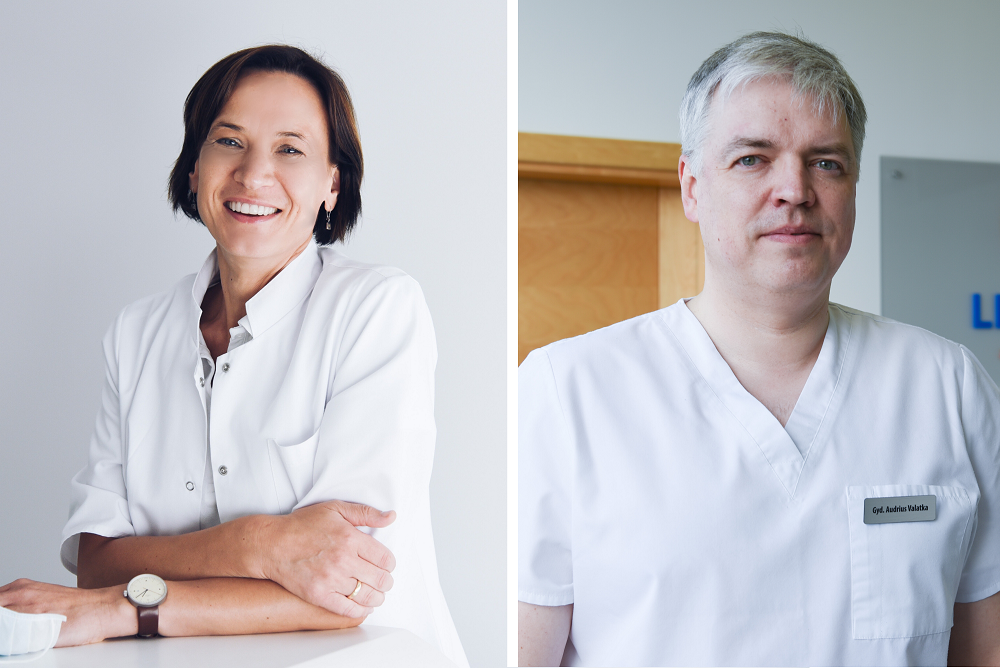Most patients that visit the eye clinic strongly believe that cataracts are only a problem in older age. However, one of the most easily diagnosed and common eye diseases among the elderly is becoming more common before fifty. There are constantly more cases of the disease occurring at an early age, and without paying attention to the symptoms, the lens of the eye becomes clouded over time to such an extent that vision becomes as through the fog.
Although cataract surgery is a technologically advanced procedure nowadays, the quality of postoperative vision also depends on a new implanted lens. If left untreated for a long time, the disease can worsen the quality of life and lead to accidents or injuries.
The risk of developing cataracts from the age of 40 starts to increase every decade. According to the EU’s statistical office, about 5 million cataract surgeries are performed in the European Union every year. Ageing is a significant factor in many eye diseases, but lifestyle also has a significant impact. Smoking and steroid use contribute most to the development of cataracts.
The Disease Does Not Choose Age
According to Lina Socevičienė, a microsurgeon at the Lirema Eye Clinic, a decade ago, the average age of a cataract patient was about seventy years, and now doctors also consult patients who have reached the age of forty.
“Such a tendency is observed not only in Lithuania but all over the world. Therefore, we can be glad that the technologies are so advanced that they allow us to solve this problem completely without pain in just half an hour, without taking time in a medical institution, and to continue living a full life,” says L. Socevičienė.
Microsurgeon Audrius Valatka agrees with doctor L. Socevičienė. According to him, the development of cataracts is also affected by co-morbidities such as myopia, thyroid dysfunction, diabetes, physical head or eye injuries, chemicals or regular medications.
“The lens of the eye begins to cloud slowly, and over time, the patient notices that vision has deteriorated. Failure to take timely action, delaying a visit to an eye doctor, can lead to complete loss of vision, so delay is not recommended,” advises A. Valatka.
It is Vital to Make the Right Choice
The outcome of the surgery and the quality of vision are determined not only by the rapid response to impaired vision and disease progression but also by the implanted lens.
“Patients can now be offered a wide range of alternatives, from basic lenses reimbursed by the National Health Insurance Funds to high-quality soft aspherical, toric and multifocal lenses, which, thanks to their special design, are stable in the eye, reduce the risk of secondary cataracts and provide better vision,” L. Socevičienė.
According to A. Valatka, to meet the patient’s visual expectations, it is crucial to consider the lifestyle, the most common or favourite activity when choosing a lens. Some are more involved in short-distance and others in long-distance activities. Therefore, the base lens does not meet all vision needs.
“For those who want to see more clearly in the distance, we usually offer aspherical lenses. Their surface is designed so that vision becomes sharper, contrasts and colors are more visible after implantation. Although to read, use a computer, knit or engage in activities that require close vision, glasses would still be needed,” says the doctor.
When choosing a lens, it is necessary to consider whether the person has astigmatism because a simple basic or aspherical lens does not correct astigmatism, visual impairment persists after surgery. In this case, toric lenses are recommended for the patient, and the problem of astigmatism is solved.
“However, the best choice for cataracts is high-end multifocal lenses that allow the patient to see perfectly from a variety of distances – up close, far and medium distance – while driving, exercising or walking and reading, knitting or working on a computer,” says A. Valatka.
Ensures Visual Quality
Multifocal lenses in their category are divided into trifocal, which allows high-quality vision at various distances, and extended focal field depth. Due to their materials, these lenses adapt perfectly to the eye and reduce the risk of developing secondary cataracts. Only an incision slightly larger than 2 mm is made during the surgery, so the postoperative period is much easier, and vision recovery is faster. The healing period of the eye is about a month, so after 30 days, the outcome of the operation can be assessed.
“For more comfort, patients often ask about the differences between trifocal and extended-depth-of-field lenses – the former provide the freedom to see perfectly in any activity, while the latter is especially suitable for those who drive a lot in the dark, allows you to see well enough at a medium distance without glasses,” L. Socevičienė clarifies.
Microsurgeon A. Valatka emphasises that multifocal lenses are sometimes compared to progressive glasses, which perform more than one function and provide clear and comfortable vision at various distances. In this case, they do not fog up, and there is no chance to break them or leave them somewhere.
“We have also had cataract surgery on a 105-year-old, so it is never too late to improve the quality of life and start enjoying it. It is important to schedule checkups every year that doctors can help to live a quality life,” L. concludes.
